Application of the spinor device in dentistry: EHF and FREE therapy are performed in parallel with traditional endodontic treatment.
In the absence of collateral edema or infiltration in the area of the transitional fold, the emitter is placed in the vestibule of the oral cavity, in the projection of the top of the root of the corresponding tooth. The emitter is not sealed, so you need to wrap it in a thin film.
If there is an inflammatory reaction of soft tissues, the emitter is applied to the skin of the face in the projection of the affected tooth and fixed with a band-aid or a special strap.
TMJ joint dysfunction
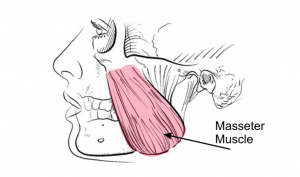
The use of the spinor device is most effective in arthritis and TMJ joint dysfunction syndrome, i.e. with severe inflammation and severe pain.
The effect of using the spinor device is most fully realized in cases when it is not used as monotherapy, but in combination with generally accepted methods of treatment.
In acute (exacerbation of chronic) TMJ arthritis: the course of treatment is 4-6 procedures, the duration is 15 minutes per area of each joint in the free MODE.
After the acute inflammatory phenomena subside, EHF therapy in the form of an anti-sedative course is indicated:
6-12 procedures, 5 minutes per area of each joint. A yellow or red emitter is used in the “universal” EHF mode.
TMJ dysfunction requires longer treatment:
12-18 procedures, 3 minutes per area of each joint and 3 minutes per area of each chewing muscle (the emitter is located on the skin of the face in the center of the masseter). A yellow or red emitter is used in the “universal” EHF mode.
Periodontitis and gingivitis
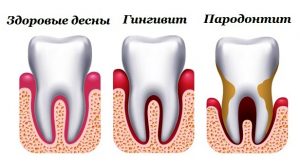
In the absence of a pronounced inflammatory reaction of soft tissues, the radiator of the spinor apparatus is introduced into the vestibule of the oral cavity and applied to the gum in the projection of the affected tooth. Emitters are not sealed, so it is recommended to wrap them in a thin film.
When the process has spread, the impact begins with the far tooth. The time of exposure to the area of each tooth depends on the severity of inflammatory phenomena and the number of teeth involved in the pathological process, given that with local periodontitis (gingivitis), the total duration of exposure is 10 — 15 minutes, with generalized 20 — 35 minutes.
Treatment of gingivitis and periodontitis with the spinor device is as follows:
1. in acute processes, or exacerbation of chronic, the time of exposure to the area of one tooth is maximum:
1 ~ 5 minutes for gingivitis, 2.5-10 minutes for periodontitis,
The number of procedures is minimal: 2-6. If necessary (pronounced pain syndrome, hyperergic type of inflammatory reaction), 2 procedures are indicated during the day.
2. Treatment of chronic processes, on the contrary, requires less exposure time:
0.5-3 minutes for gingivitis, 1-5 minutes for periodontitis,
but a longer course of EHF therapy: 12-18 procedures (for gingivitis, 8-15 procedures). In a chronic process, in addition to the static position of the emitter on the surface of the alveolar process, it is permissible to influence in the mode of slow continuous movement of the emitter along the dentition: linear, or circular massaging movements.
The course of treatment is 10 procedures with a total duration of one procedure from 10 to 20 minutes. Yellow or red emitter in universal EHF mode.
Mucosal problems
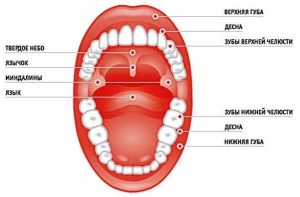
Clinical observations confirm the effectiveness of the spinor device in the treatment of a number of acute and chronic diseases of the oral mucosa and the red border of the lips: acute herpetic stomatitis, chronic recurrent aphthous stomatitis, leukoplakia, lichen planus, decubital ulcers, chronic cracks of the red border (lips) , etc.
The most effective contact method of exposure, in which the emitter is applied directly to the pathological focus, if necessary — after application anesthesia. Since the emitters are leaky, it is recommended to wrap them in a thin food wrap. If intraoral exposure is not possible, the emitter is fixed from the skin.
Treatment of the oral mucosa in acute processes and exacerbation of chronic:
the time of exposure to a single focus (or one area of a large focus) is 5-10 minutes, the total duration of the procedure is 10-30 minutes, the course of treatment is 3-6 procedures.
Chronic diseases of the oral mucosa without exacerbation are treated in the mode:
the time of exposure to one focus (part of the focus) is 2-5 minutes, the total duration of the procedure is 20-35 minutes, the course of treatment is 12-18 procedures.
For chronic diseases, regular (1-2 times a year) preventive courses are recommended: 5-6 minutes for 2-3 minutes per focus. This prevents aggravation of the process and prevents its progression.
In all cases, the spinor device uses a yellow emitter in the “universal” EHF mode to treat the oral mucosa.
Acute lymphadenitis
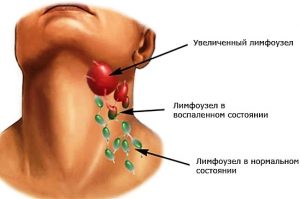
Lymphadenitis is an inflammatory lesion of the lymph nodes. In most cases, lymphadenitis occurs as a complication due to the presence of an inflammatory process in the body. Infectious agents (microorganisms and their toxins) penetrate the nearest lymph nodes to the inflammation with a current of lymph that flows from the focus of inflammation. Sometimes, by the time of development of lymphadenitis, this focus is already eliminated and may remain unnoticed.
In acute lymphadenitis, the emitter is applied to the skin in the projection of the affected lymph node:
exposure time-10 minutes, a course of 3-6 procedures. The effect is carried out by a green or yellow emitter.
You can also have a free-effect ON the skin projection of an inflamed lymph node:
after the EHF procedure described above, a record will remain on the emitter. This emitter should be fixed in the same place for 4 -12 hours. At the same time, it is desirable to do overwriting every half an hour (2nd mode of the spinor device).
Timely started EHF therapy, as a rule, allows you to stop the inflammatory process at the initial stage and prevent suppuration of the lymph node. After the acute inflammatory phenomena subside, for the accelerated elimination of residual lymphadenitis, you can conduct a course of 6 to 12 procedures for 5 minutes.
Pericoronaritis
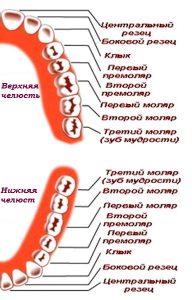 Pericoronaritis is an inflammatory process that affects the soft tissues of the gums surrounding the tooth that is erupting or has already erupted.
Pericoronaritis is an inflammatory process that affects the soft tissues of the gums surrounding the tooth that is erupting or has already erupted.
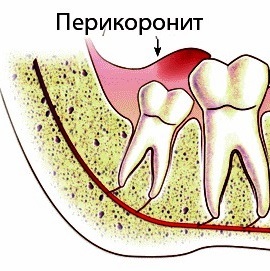
If pericoronitis due to the limited opening of the mouth, increased pain sensitivity of the soft tissues of the gums and difficulty of fixing the radiator in the area of the pathological focus, the impact of a unit spinor is made from skin, with two poles:
When from pericoronitis of lower third molars, the transducer is a first in the centre of the submandibular area, then masciarelli region — 2 cm anterior to the posterior edge of the branch and 2 cm above the lower edge of the body of the jaw.
In periconaritis from the upper third molars, the first impact point is also located in the center of the submandibular area, the second is located under the lower edge of the zygomatic arch, in 3 “transverse” fingers of the patient anteriorly from the base of the tragus of the ear, the impact on this point is made with the mouth open.The time of exposure to each of the points is 10 minutes, the course of treatment is 2-4 sessions. We act with a red, green or yellow emitter.
In the manner described in relation to the pericoronitis of the lower molars, treated with inflammatory contracture of the masticatory muscles.
Periodontitis
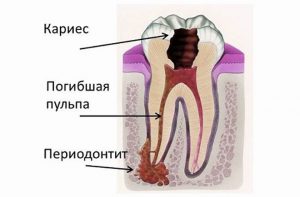
The tissue surrounding the root of the tooth and holding it in place is called the periodontal. Periodontal inflammation is called periodontitis. It usually develops in the absence of timely treatment of tooth pulpitis, or as a result of poor-quality root canal filling.
Treatment of periodontitis with the spinor device:
In acute periodontitis (or exacerbation of chronic), 3 — 5 EHF procedures are performed for 10 minutes, until the pain disappears, the inflammatory reaction of soft tissues and secretions from the root canal. With a pronounced inflammatory reaction, it is advisable to conduct 2 procedures per day, the total number of procedures in this case increases to 6-8. we Use a yellow or red emitter in the “universal EHF” mode.
In chronic periodontitis (without exacerbation), 2-3 EHF procedures are performed for 5 to 7 minutes. We use a yellow or red emitter in the “universal HF” mode. The use of EHF therapy against the background of endodontic treatment prevents the aggravation of the process and the occurrence of post-filling pain. If, despite the ongoing preventive EHF therapy, periodontitis exacerbation develops, the effect continues according to the scheme described above.
Pulpitis
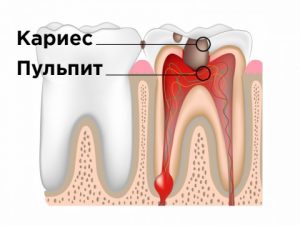
Pulpitis-inflammation of the internal tissues of the tooth (pulp). The pulp is located inside the dental canal and contains nerves, blood vessels, and connective tissue cells. Its task is to provide nutrition to the hard tissues of the tooth from the inside.
Treatment of pulpitis with spinor apparatus:
In acute pulpitis (or exacerbation of chronic pulpitis), we perform 2-4 EHF procedures in the “universal EHF” mode for 5-7 minutes, until the pain stops. In some patients, the effect is observed after the first procedure. We use a yellow or red emitter.
p/s Our English is not perfect . We will be happy if you point out transcription errors in comments. And you can write your questions also about this treatment protocol.

